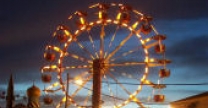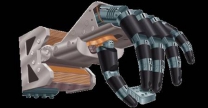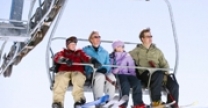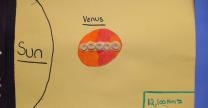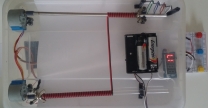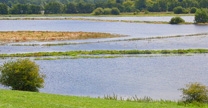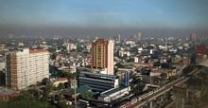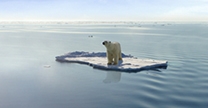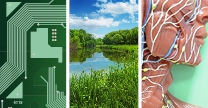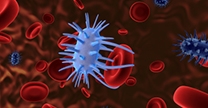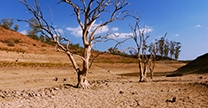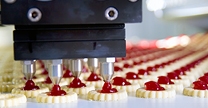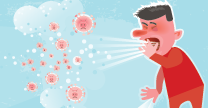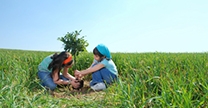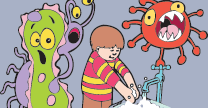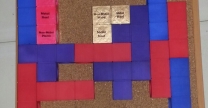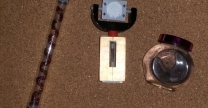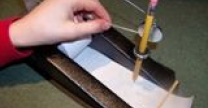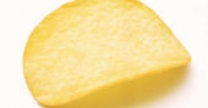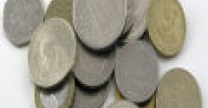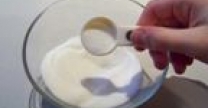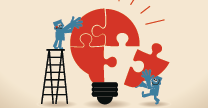Lesson Plans
Looking for a great project-based lesson? Teachers TryScience features hands-on lessons focused on environmental science. Each lesson is integrated with effective teaching strategies, practical how-to's and other helpful supports.
CREATE A LESSON PLAN
Share your lesson with the Teachers TryScience community! Your lesson will help grow the instructional content on the site.
Click below to get started!
EQuIP Reviewed Lessons
Units
Using the THINK app (free for iPad and 10" Android tablets), students will explore how progress is shaped through a common and systematic approach that follows a five-step process of Seeing, Mapping, Understanding, Believing and Acting (SMUBA). Your students will explore the process of innovation and participate in as many as three units, featuring hands-on lessons that will to help them become innovators in their own right and to take actions that can help them become forward-thinking citizens of the world. |
Lessons
178 Lesson Plans
|
Partner Contributed May 19 2011
Source: TeachEngineering Digital Library
In this design-based activity, students explore environments, ecosystems, energy flow and organism interactions by creating a scale model biodome. |
Partner Contributed Oct 29 2015
Source: engineeringgood
For students who are physically challenged, experiential learning may be difficult as there are not enough products commercially available that are adapted to their learning needs. The apparatus in this experiment have been specially customised to their level of motor skills. These will enhance the learning experience of the students as they can grasp scientific concepts more easily through hands-on experiential learning, having fun in the process. |
Partner Contributed Jun 08 2011
Source: NYSCI
In this lesson, students will take photographs and make observations of the living and nonliving things in their area. They will use the information they collect to create a representation of how these things are interrelated and share their representations online. |
|
Partner Contributed Mar 20 2011
Source: TeachEngineering Digital Library
In this lesson, students will design a fermentation experiment and use their data as well as outside research to design a biorefinery plant. |
Partner Contributed Jun 19 2014
Source: IEEE
Lesson focuses on the engineering behind big wheels (sometimes called Ferris wheels). Teams of students explore the engineering behind the "London Eye," explore the history of big wheels, and construct a working wheel model using pasta, glue, and teabags.
|
Partner Contributed Oct 02 2014
Source: IEEE
In this lesson students develop a robot arm using common materials, exploring design, construction, teamwork, and materials selection and use. |
|
Partner Contributed Jun 17 2011
Source: NYSCI
In this inquiry-based lesson, students measure the biomass of trees, calculate the carbon stored by the trees, and use this information to create recommendations about the use of trees for carbon sequestration. |
Partner Contributed EQuIP-reviewed Jun 29 2015
Source: John King
In this lesson, students will explore the connection between reforestation and deforestation and greenhouse gases. They’ll do this by collecting data about local trees and analyzing and interpreting data about deforestation and reforestation, which will serve as the example in this lesson of one set of activities that can affect levels of greenhouse gases in the atmosphere. Students will apply these ideas to the construction of a written argument that helps answer the driving question: What happens to carbon dioxide levels in our local community when trees are removed or added? |
Partner Contributed Jun 19 2014
Source: IEEE
Lesson focuses on unique challenges in transportation engineering, such as devising a method for skiers or hikers to get to the top of a mountain. Students work in teams to design a "chair lift" out of everyday items that can transport a ping pong ball in a chair of their own design from the bottom of a "valley" to the top of a "mountain" along a clothes line or wire without the ball falling out. Students design their chairlift and chair on paper, execute their design, test it, reflect on the challenge, and share their experiences with the class... |
|
Partner Contributed EQuIP-reviewed Jun 04 2015
Source: NYSCI
In this lesson, students use data related to distances between objects in the solar system to create their own scale model to represent these distances and better understand relationships of objects in the solar system and answer the driving question: How do you study a system that won’t fit in the classroom?
|
Partner Contributed Jun 19 2014
Source: IEEE
Lesson focuses on issues civil engineers face, including critical load and how to reinforce the design of a structure to hold more weight. |
Partner Contributed Oct 29 2015
Source: engineeringgood
For students who are physically challenged, experiential learning may be difficult as there are not enough products commercially available that are adapted to their learning needs. The apparatus in this experiment have been specially customised to their level of motor skills. These will enhance the learning experience of the students as they can grasp scientific concepts more easily through hands-on experiential learning, having fun in the process. |
|
Partner Contributed Nov 02 2015
Source: engineeringgood
For students who are physically challenged, experiential learning may be difficult as there are not enough products commercially available that are adapted to their learning needs. The apparatus in this experiment have been specially customised to their level of motor skills. These will enhance the learning experience of the students as they can grasp scientific concepts more easily through hands-on experiential learning, having fun in the process. |
Partner Contributed Apr 20 2011
Source: TeachEngineering Digital Library
In this design-based lesson, students study flood dynamics as they modify a riverbed with blockages or levees to simulate real-world scenarios. |
Partner Contributed EQuIP-reviewed Jun 29 2015
Source: NYSCI
Student will answer the driving question:
How can the impact of future flooding events be mitigated through the understanding of floodplains? |
|
Partner Contributed Mar 20 2011
Source: TeachEngineering Digital Library
Students investigate the life cycle of an engineered product and then suggest ways to reduce the product's environmental impact based on their analysis. |
Partner Contributed Jun 08 2011
Source: Biomimicry Institute
Students design a shelter, including physical structure, heating and/or cooling mechanisms, an energy source and more. |
Partner Contributed EQuIP-reviewed Jul 31 2015
Source: NYSCI
In this lesson, students will use a particulate air pollution model to observe phenomena. They will then plan and carryout a field investigation to observe particulate matter pollution around their school, and design a method to measure air quality and propose ways to improve air quality. They will answer the driving question: How can we accurately assess air quality, in order to design solutions to improve the quality of the air we breathe?
|
|
Partner Contributed Mar 20 2011
Source: TeachEngineering Digital Library
In this inquiry-based lesson, students build particulate matter collectors to discover which local areas produce the most visible air pollution. |
Partner Contributed Apr 11 2013
Source: NYSCI
In this lesson, students will use the "Seeing" portion of the THINK app to understand the difference between climate change adaptation and climate change mitigation. |
Partner Contributed May 29 2013
Source: NYSCI
In this lesson, students will learn about systems, compare and contrast the interactions within different natural and manmade systems, and think critically about gathering information about systems and then mapping this data.
|
|
Partner Contributed Nov 19 2012
Source: NYSCI
In this lesson, students will be introduced to the science of epidemiology, encouraged to think critically about how illness may spread in their own classroom, and investigate innovative technologies and methodologies that can help prevent, treat or control diseases |
Partner Contributed Apr 11 2013
Source: NYSCI
In this lesson, students will use the Understanding part of the THINK app to examine systems to learn why changes in precipitation may result in different impacts in different areas. |
Partner Contributed May 29 2013
Source: NYSCI
In this lesson, students will understand the importance of analyzing the local food system, generate a simple model of the local food system, and gather information about a suspected problem within the local food system.
|
|
Partner Contributed Nov 19 2012
Source: NYSCI
In this lesson, students will recognize that the term “map” does not just correspond to geographical information and will collect and represent data related to the spread of illness in the school. |
Partner Contributed Apr 11 2013
Source: NYSCI
In this lesson, students will be creating actual useful climate change vulnerability assessment tools. |
Partner Contributed May 29 2013
Source: NYSCI
In this lesson, students will think critically about how to display and present data clearly and use data they have collected to take action around problems in their local food systems.
|
|
Partner Contributed Nov 19 2012
Source: NYSCI
In this lesson, students will use data they have collected and mapped to recommend and take specific actions related to disease prevention. |
Partner Contributed EQuIP-reviewed Jun 29 2015
Source: NYSCI
In this lesson, students will use information about forces to answer the driving question: What components and materials can be used to create a model chair lift, designed to carry a set of aid materials? |
Partner Contributed Oct 29 2015
Source: engineeringgood
For students who are physically challenged, experiential learning may be difficult as there are not enough products commercially available that are adapted to their learning needs. The apparatus in this experiment have been specially customised to their level of motor skills. These will enhance the learning experience of the students as they can grasp scientific concepts more easily through hands-on experiential learning, having fun in the process. |
|
Partner Contributed Oct 31 2015
Source: engineeringgood
For students who are physically challenged, experiential learning may be difficult as there are not enough products commercially available that are adapted to their learning needs. The apparatus in this experiment have been specially customised to their level of motor skills. These will enhance the learning experience of the students as they can grasp scientific concepts more easily through hands-on experiential learning, having fun in the process. |
Partner Contributed Oct 31 2015
Source: engineeringgood
For students who are physically challenged, experiential learning may be difficult as there are not enough products commercially available that are adapted to their learning needs. The apparatus in this experiment have been specially customised to their level of motor skills. These will enhance the learning experience of the students as they can grasp scientific concepts more easily through hands-on experiential learning, having fun in the process. |
Partner Contributed Jun 08 2011
Source: TeachEngineering Digital Library
Students investigate passive solar heating design, building model houses, and testing them for thermal changes during a simulated day and night. |
|
Partner Contributed EQuIP-reviewed Jun 29 2015
Source: NYSCI
Student will answer the driving question:
What role do different materials play in maximizing energy transfer into a system, and how can we apply this to design a passive solar house? |
Partner Contributed Jun 08 2011
Source: TeachEngineering Digital Library
This lesson challenges groups of students to design and construct a solar powered car. |
Partner Contributed Mar 21 2011
Source: Keep America Beautiful
Students simulate separation techniques used by materials recovery facilities (MRFs) and then design their own series of recycling techniques. |
|
Partner Contributed Oct 29 2015
Source: engineeringgood
For students who are physically challenged, experiential learning may be difficult as there are not enough products commercially available that are adapted to their learning needs. The apparatus in this experiment have been specially customised to their level of motor skills. These will enhance the learning experience of the students as they can grasp scientific concepts more easily through hands-on experiential learning, having fun in the process. |
Partner Contributed Oct 02 2014
Source: IEEE
Lesson focuses on exploring how the development of seismographs has helped save lives around the world. Students work in teams to design their own seismograph out of everyday items, and test its ability to record a simulated classroom earthquake. Students evaluate their own seismographs, those of classmate teams, and present findings to the class. |
Partner Contributed Oct 02 2014
Source: IEEE
Lesson focuses on engineering package designs that meet the needs of safely shipping a product. Students work in teams of "engineers" to design a package using standard materials that will safely ship a single chip through the mail to the school address. |
|
Partner Contributed EQuIP-reviewed Jun 05 2015
Source: NYSCI
In this lesson, students investigate the forces that potentially crush snack foods and then use this information to redesign chip packaging. They then evaluate and redesign the packaging based on testing in order to answer the driving question: What features of lightweight chip packaging minimize crushing during shipping?
|
Partner Contributed Oct 02 2014
Source: IEEE
Lesson focuses on the engineering behind industrial sorting processes. Though exploring the coin manufacturing or minting process, students explore how sorting is engineered into manufacturing and packaging systems. Working as an engineering group, students then work in teams to design and build a system to sort different sized coins for packaging. |
Partner Contributed Oct 31 2015
Source: engineeringgood
For students who are physically challenged, experiential learning may be difficult as there are not enough products commercially available that are adapted to their learning needs. The apparatus in this experiment have been specially customised to their level of motor skills. These will enhance the learning experience of the students as they can grasp scientific concepts more easily through hands-on experiential learning, having fun in the process. |
|
Partner Contributed Oct 02 2014
Source: IEEE
Lesson focuses on surface area and how the shape of sugar crystals may differ as they are grown from sugars of different grades of coarseness. Students explore surface area, nanostructures, and work in teams and participate in hands-on activities. |
Partner Contributed Nov 19 2012
Source: NYSCI
This lesson provides an overview of the concept and process of innovation, using the THINK app. |
Partner Contributed Sep 09 2011
Source: TeachEngineering Digital Library
Students collect, categorize, weigh and analyze classroom trash and discuss ways that engineers have helped to reduce solid waste. |







